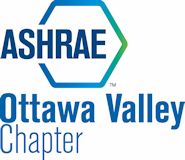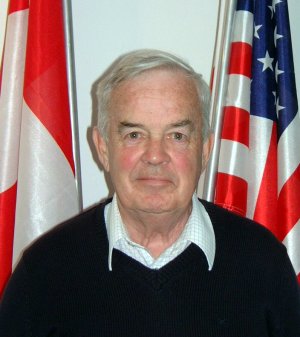

Spotlight on Wayne Tapp

“I like to see someone walk away happy after a problem has been solved”
Spotlight on Wayne Tapp
interviewed 2008.05.05
“I am eternally grateful for my career, and truly feel that I could not have gained more enjoyment in any other business. Given the opportunity, I would gladly do it all again.”
How’s that for an endorsement of our industry?
Wayne Tapp was born on October 6th, 1936 in Ottawa, his parent’s first son after three daughters. For reasons we will not enter into here, his parents decided to call it quits soon thereafter, and the task of raising Wayne then fell to his grandparents from his father’s side. Wayne was suffering from infantile paralysis and required reliable care, and fortunately his grandfather James Tapp had a flourishing contracting business at the time. His sisters were sent to St. Patrick’s Orphanage because they were considered “healthy”, and Wayne’s early years were spent at his grandparent’s house on Clarendon Avenue near Island Park Drive and Wellington Street. This was actually considered the “west end” in those days because it was at the western city limits.
Wayne attended St. George’s Catholic School on Piccadilly Avenue from grade one through grade eight. This school was run by the Grey Nuns and he can remember them as strict disciplinarians. In fact he was prone to getting into school-yard scraps that usually ended in a good strapping. One of his favourite sparring partners was the late Pat Marsden, who went on to become a colourful sports broadcaster.
Of course Wayne lived through the years of World War II and he remembers going to the junction of Bank and Sparks Streets on VE Day with his grandparents. The shouting, singing and general merriment were an incredible experience and he can still see it clearly.
High school years were spent at St. Patrick’s College High School on Main Street (now Immaculata). He was quite athletic in his early years and enjoyed playing junior hockey. He graduated from high school in 1954 after finishing grade 13. At around this time his grandfather James was diagnosed with pancreatic cancer, and James’ love for Wayne caused him to alter his will to include Wayne as an equal to his three sons and six daughters. Wayne jokes that this effectively made him the “fourth son”, and therefore made his father his brother!
In 1954 Wayne enrolled in Architecture at Ryerson Institute of Technology and after about a year and a half, he switched over to Structural Engineering. Alas this did not prove to be his calling either and after about a year Wayne gave it up and returned to Ottawa. His father Victor was still in the picture and he was disappointed that Wayne had left the college. However Wayne was not drifting for long because Victor was acquainted with Darcy Helmer, of Balharrie Helmer Architects, and Wayne soon had a job there, working on structural design. This was circa 1957 and he also undertook occasional mechanical project work and realized that this was his calling. He was also developing quite the reputation as a fun-loving rascal (sic).
Wayne worked on the Riverside Hospital structural design, and with colleague George Pack’s guidance, was able to complete sixteen 30x42” structural drawings in two months, quite an achievement in the days of hand-drafting and T-Squares. In those days the firm contracted much of the mechanical and electrical design to Goodkey Weedmark; Wayne remembers coordinating the design with Gord Goodkey. Wayne’s efficiency paid major dividends to both the firm and himself. Watson Balharrie was the senior architect at the firm, renowned for his genius, coke-bottle spectacles, and a rotund figure. It was about 1960 at this point and although Wayne owned a new house in Aylmer, Quebec, he did not own a car. Watson clearly wanted to reward Wayne for his hard work and presented him with a cheque for $1600.00, the result of which was a 1956 Chevy station wagon c/w fins, from Brennan Motors near Wellington and Holland. Watson also encouraged Wayne to take a holiday in the fall of that year and being a photography buff, he made a new Minolta camera available for Wayne’s use on the holiday. After the holiday Wayne showed Watson the beautiful range of slides he had taken with the camera, and Watson refused to accept the camera back “because it was used”. This was when Wayne realized two things about Watson Balharrie: (a) he was a gentleman; and (b) he was not in fact two separate partners, Watson being his Christian name!
The firm strived to offer the “full package” of design services and Wayne remembers working with a Brit called Dave Palmer (mechanical) and an electrical guy called Bill Macawhey. The close working relationship with Goodkey Weedmark was slowing down at this point. Wayne soon began working on more mechanical projects under Dave Palmer, and some major projects were completed in these years such as the main Post Office Terminal in Alta Vista, Sir Robert Borden High School, and Earl of March High School. The company bid for the design of the new Lansdowne Park stadium complex but lost out to a firm from British Columbia. Eventually Dave Palmer left for a company in Cornwall, and Wayne was soon joined by Paul Leung, a stamped mechanical engineer.
Wayne spent most of the 1960’s at Balharrie Helmer and in 1972 he was offered a position at JL Richards, where Ken Hazel was running the mechanical design department. Wayne stayed at this position until 1979. Ken Hazel left circa 1977 to join Clemann Large Patterson, after which Wayne took over the role of running the design department under Noel Kirby. Gerry Patterson met with Wayne in 1979 and offered him a position at CLP, after being highly recommended by Ken Hazel. Wayne was in for a slight shock with this move; he had grown accustomed to being a supervisor over a large number of designers whilst at JL Richards. At CLP he was given two or three projects to run, shown a drawing board, and expected to get on with it.
After a short while Wayne approached Gerry Patterson and basically said he was not happy with his own performance and felt that he was letting the firm down. One Drew Hamilton had recently left CLP and this left an opening for Wayne to move into the site supervision role, which certainly became his forte from that point onwards. In 1980 things were “booming” to say the least, and Wayne remembers running as many as 30-40 projects at once in those days. Phrases like “drive-by supervision” were common.
One day Wayne had been out in the east end (presumably “driving-by” a project) when he was asked by Gerry Patterson to take a quick look at a building just off the Queensway near Carling, on his way back. So Wayne exited the Queensway at the Carling westbound off-ramp and pulled around the back of Hampton Park Plaza and stopped outside a multi-storey building under construction. The site was basically deserted and he proceeded to walk up the stairs and took notes of seemingly inadequate heating water piping and other deficiencies. After this he went back to the office and wrote a quick report for Gerry. The next morning he walked into Gerry’s office and they discussed the report which Gerry said was excellent but rather confusing, because the building was supposed to have electric baseboard heating, not forced hot water. To this Wayne said something should be done about that right away because there sure was heating water being installed. Then they checked the address and the laughter started. The right building was way over near Pinecrest (don’t ask).
Wayne has nothing but good things to say about his time at Clemann Large Patterson, which was run by a wonderfully innovative group of engineers and designers. These were gravy days, the money was great, and he had inspiring people like the late Alan Large around him who was famous for his British humour. David Henselwood became a great pal, and Wayne taught him to curl. It was fairly common for both of them to attend a site meeting together, then do lunch, and end up curling high on life and beer.
The energy crisis brought much work with an energy-saving bias, and Wayne worked on many energy conservation studies for the Government buildings downtown. He remembers a wonderful project in the Blackburn building on Sparks Street, which had high security because of the Prime Minister’s support staff occupying some of the floor space. This was a tenant refit that lasted 1-1/2 years and Wayne completely gave himself to the project. We often hear about character actors such as Sean Penn who spend six months or so “living the role” before playing the part. This is the dedication that Wayne brought to his work.
In around 1994 Wayne left CLP and formed his own company, WV Technical Services, after which he was involved with the mechanical retrofit of many schools for the Ottawa Catholic Board. In fact his relationship with the school board was so good that in 1996 he accepted a direct two-year contract with them to run their Gurdwara Maintenance and Operations Department.
The year 1999 was a difficult one for Wayne because he suffered heart problems and eventually had triple-bypass surgery, after which he took most of the year off to recover. His good friend Tom Wolstenholme eventually approached him with a project for Greer Galloway, a furniture manufacturing plant in Peterborough. This was a warehouse conversion project and Wayne designed the HVAC system which was interesting because it required a 100 foot high exhaust stack to get rid of the nasty chemicals involved with the manufacturing process.
Wayne has continued working with Tom Wolstenholme and is still involved on many current projects with Jp2g here in Ottawa. In the words of the late Drew Hamilton: “Wayne is a legend in Ottawa”. And he is a true gentleman and a great friend.
This article was first published in the May 2008 issue of the Capital Communiqué.


